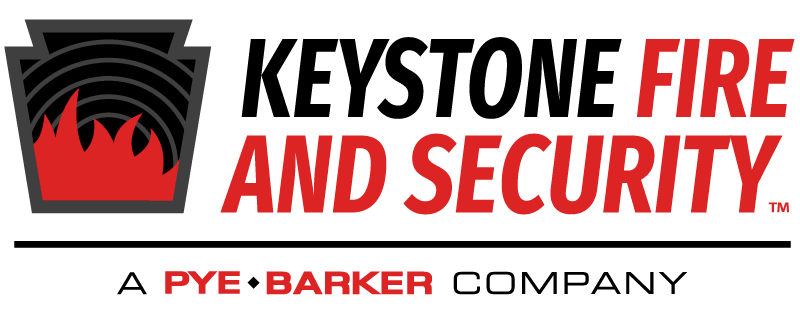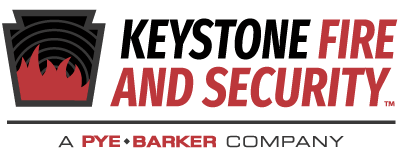In the event of a fire, a fire sprinkler system is one of the first defenses against extensive damage to your property, as well as against possible injury to yourself or others. However, cold weather can decrease the ability of a fire sprinkler system to work effectively in an emergency. As a result, it is important to understand how constant freezing and thawing can cause issues for your fire sprinkler system, and what to do to ensure that your system is working properly if a fire does break out.
What Happens When Fire Sprinkler Systems Freeze and Thaw
We have all heard about pipes snapping or bursting when the weather is freezing cold; in the fire protection industry, these are called freeze breaks. How exactly does this happen? Wet fire sprinkler systems must be connected to a water source to work properly. As a result, there is always water located within the sprinkler system, whether it has been recently used or not. When temperatures plummet to sub-freezing levels, the water contained within the sprinkler system begins to freeze and turn to ice. When water turns to ice it expands and breaks the sprinkler pipe causing a freeze break. Similarly, condensation that has gathered inside drum drips can begin to freeze and cause problems as well.
Frozen water within the pipes can block the flow of water to the rest of the system. Ice-clogged pipes can be a problem for three reasons. First, a facility or maintenance manager might not be aware of the blockage until a fire has started and no water dispenses from the sprinkler system, rendering the system useless when it’s most needed. Secondly, it can be difficult to find the exact spot where the obstruction is located. Even if you suspect an obstruction, it might not be clear where it is. Finally, in worst-case scenarios, ice buildup causes an increase in water pressure behind the blocked portion of the piping, which could eventually lead to a burst pipe.
In other circumstances, freezing and thawing can threaten the integrity of the sprinkler piping. Since water expands as it freezes, ice can cause a significant amount of pressure on the inside of the pipes. If the ice begins to thaw, more water can seep into those spaces, which in turn can freeze again and increase the pressure further. The more water that freezes in an area, the more pressure is built up within the pipe. At some point, the pressure caused by the expanding ice is simply too much for the pipe to contain, and this can result in the pipe becoming warped and brittle, or even leading to a crack in the piping.
How to Avoid Damage to Fire Sprinkler Systems from Freezing and Thawing
Damaged fire sprinkler systems can be a major interruption in a person’s life. Leaking water can damage walls, furniture and company equipment beyond repair. Additionally, severe breaks in the piping can be expensive to replace. Not to mention, when a fire sprinkler system is out of commission due to repairs, you are simply more vulnerable to fire damage in the event that a fire occurs. Therefore, it is prudent to try and avoid a freeze break before it happens.
The first way to combat the effects of freezing and thawing are to ensure that your sprinkler system is not susceptible to great variations in temperature. In many places throughout your facility, sprinkler systems may be sufficiently insulated by the building’s general heating system. However, places that are more susceptible to cold temperatures should be checked regularly during cold snaps to ensure that the piping is not getting too cold. Piping located near doors and windows, drafty areas, attics and basements are all examples of areas that should be checked often, especially if the weather drops to low temperatures.
Once these vulnerable locations have been identified, it’s important to implement measures to ensure that these areas don’t drop below 40 degrees. This can be accomplished by installing insulating materials around the sprinkler system or increasing the building’s thermostat to a temperature high enough to avoid freezing water. If your sprinkler system has drum drips for collecting condensation, it is important to regularly empty any water that has been collected. If possible, it can also be helpful to have your fire protection company run the water in the sprinkler system to get the liquid moving in the pipes. Water that stands still freezes faster than water that’s in motion. Keeping the water moving can help prevent the effects of freezing.
If you suspect that a portion of your fire sprinkler system has become frozen, the first step is to turn off the water that supplies the sprinkler system and call your fire protection company. Once this step has been completed, a technician can help attempt to thaw the frozen area. Never use electricity or fire to defrost a sprinkler system, as they can cause further damage. Instead, try increasing the room temperature, or wrapping the affected area with blankets or a towel soaked in hot water. After thawing the system, slowly turn the water back on. This will help you identify whether any cracks or leaks have resulted from the blockage. If a pipe has burst, a fire safety specialist can help you identify the extent of the damage to your system and make repairs accordingly.
A damaged fire sprinkler system can be a major inconvenience. However, with proper maintenance, you can avoid blocked systems, burst pipes, and freeze breaks. Staying ahead of a frozen sprinkler system will ensure that your home or office is properly protected from fires.
What to do if a Pipe Bursts in your Fire Sprinkler System
Unfortunately, sometimes preventative measures fail, and sprinkler pipes burst. Despite your best efforts this could happen at your property and it’s best to know what to do if a pipe bursts so you can prevent as much damage as possible.
First, don’t panic. Second, turn off the source of the water leading to the burst pipe. Third, contact an experienced fire protection company like Marco Protection Systems LLC to assess and repair the damages. Sometimes cracks and leaks are small, but other times they can be difficult to fix without the specialized equipment of a fire protection company. In the meantime, keep the remaining pipes in your property at a safe temperature and heat them slowly if necessary. Lastly, check that the system is free of other cracks by slowly running water back onto the pipes.
Marco Protection Systems LLC can Help Prevent and Fix Frozen or Burst Pipes
Marco Protection Systems LLC is committed to providing the highest quality fire safety services. Not only do we install fire sprinkler systems, but we maintain them for you as well. With the winter months come colder temperatures that threaten to damage your fire protection systems. Marco tests your fire sprinkler system pipes with a hydrometer and replenishes the system with anti-freeze when necessary. If, for any reason, the cold weather takes a toll on your fire sprinkler system pipes and one bursts, Marco Protection Systems can repair it. Marco guarantees 24/7 emergency service. In the winter months, we increase our emergency call staff size to ensure response to your facility in a timely manner. If your pipes keep freezing, talk to Marco about potentially installing a different kind of fire sprinkler system which does not have water sitting in the pipes, or a fire suppression system. Fire suppression systems use a suppressing agent that is not water so you do not have to worry about water freezing your pipes in low temperatures. Contact Marco Protection Systems LLC to discuss your options and get a quote today.

